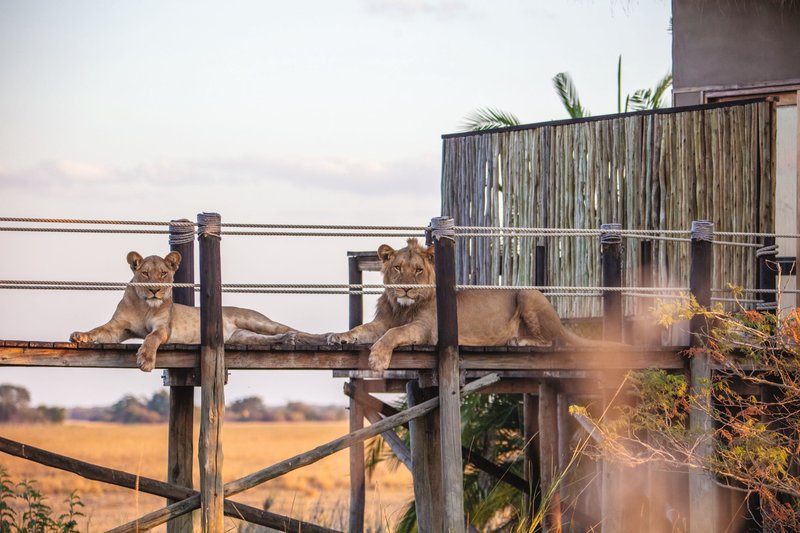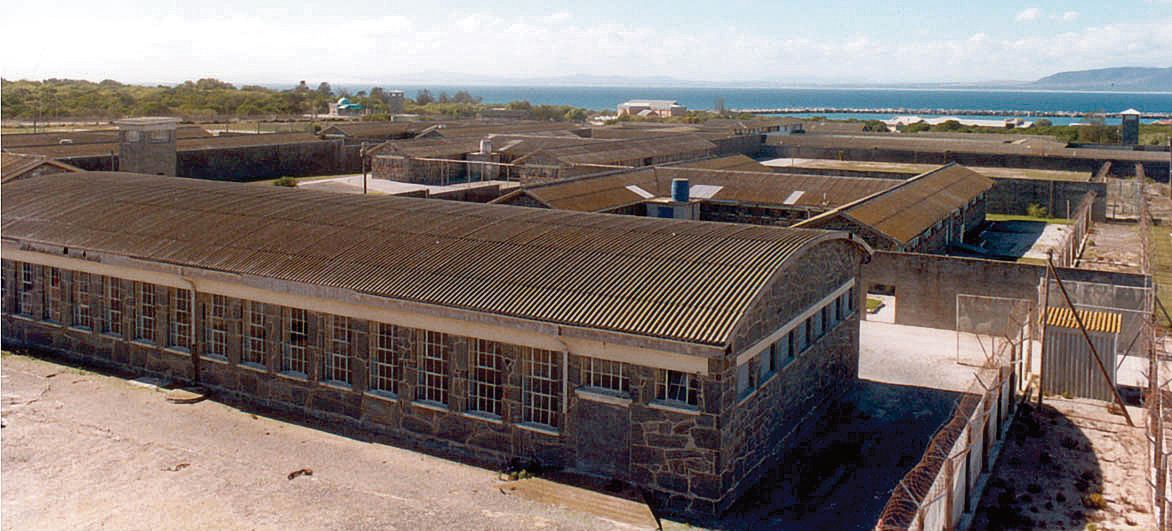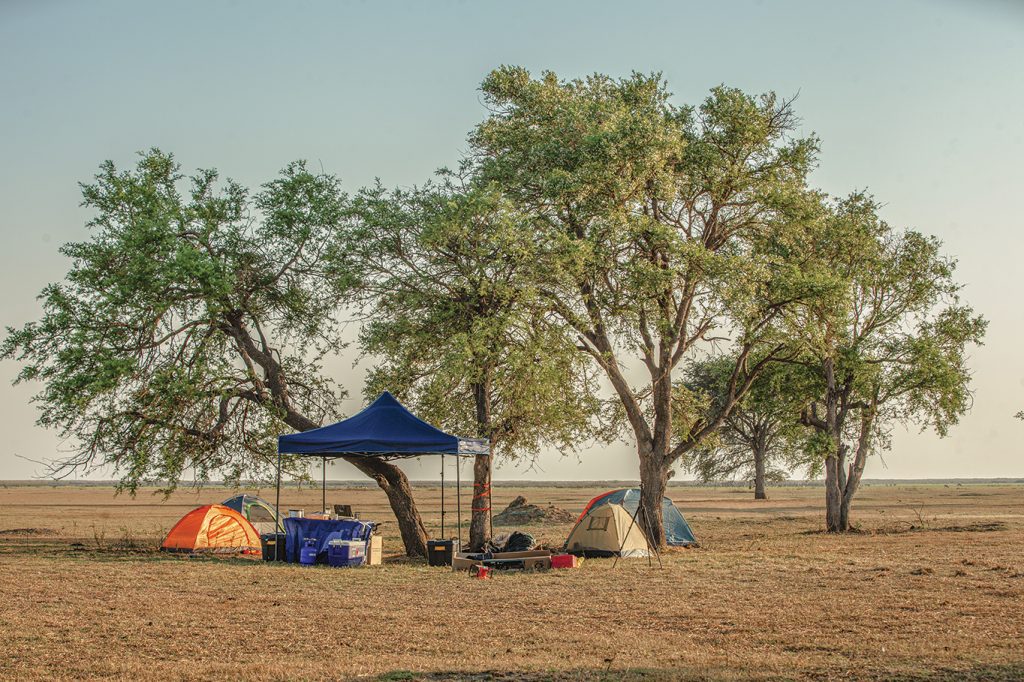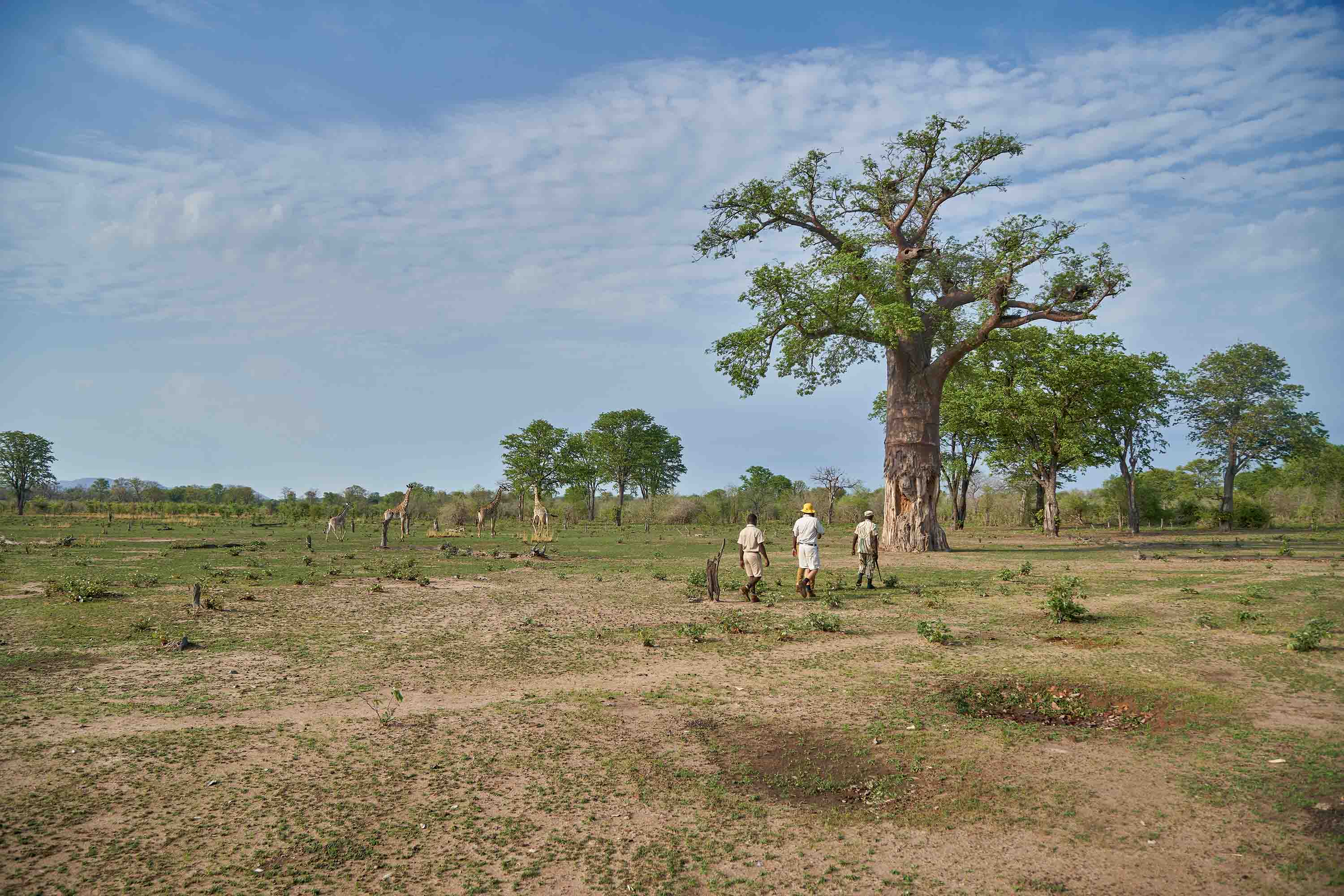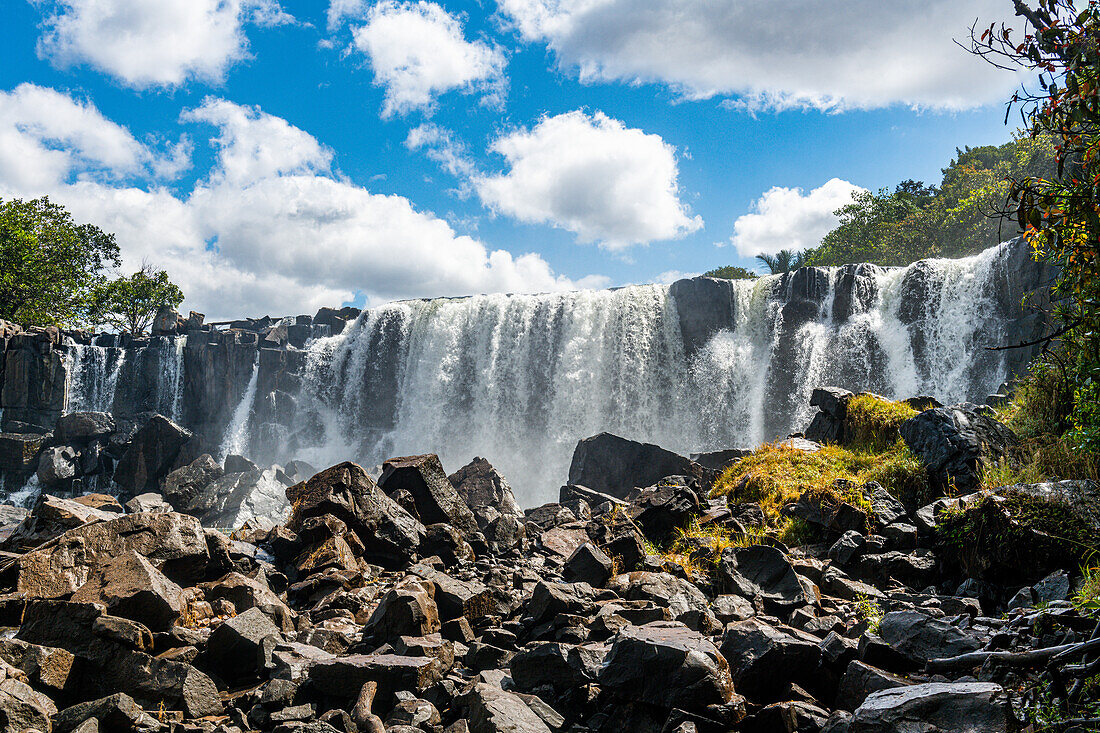About eight figures were lined up next to a tree as we drove up a slight incline from the straight, flat dirt road cutting the plains from east to west. After clambering out of the car, we were offered warm hand towels, which felt good against a face newly accustomed to back-seat air-conditioning. It was already quite dark, around half-past seven, to be exact. The staff had been waiting since eight that morning. “We didn’t know when you would arrive,” one said. Although I wanted to congratulate them on their diligence, this seemed a little out of place. Perhaps I should suggest Samuel Beckett’s Waiting for Godot as essential reading for those in the bush. Note to self: Read Waiting for Godot again.


The moon was high and bright in the sky by the time we offloaded our luggage and paused to gaze out over the Busanga plains from the deck of the common area. The pale disc bathed the flat terrain stretching out before us with a soft, milky glow. There would be no sign of stars throughout our trip, the sky alternately belonging to the sun or the full moon and, at times, to both. I would spend much of my time contemplating on this deck or in the modified Land Cruiser we jostled in during the many game drives. To look out and observe the uninhibited flat expanse of the plains felt like a return to an era unaffected by the demands of constant unwanted distraction.
We lodged at the Kasonso-Busanga Camp, which flirts with the western edge of the Busanga plains. Ostensibly, the camp was designed with the terrain in mind. Kasonso is located on a fairly prominent hillock overlooking the plains’ vast, uninterrupted stretch, with the savannah woodlands’ treeline standing like sentinels at its edge. The camp has a stripped-down aesthetic that mimics the vastness of the plains, with modest pieces of furniture in the common area giving way to the large viewing deck raised only a few metres above the level sweep of the plains below. Rightly so; it didn’t feel like it needed to do anything else.
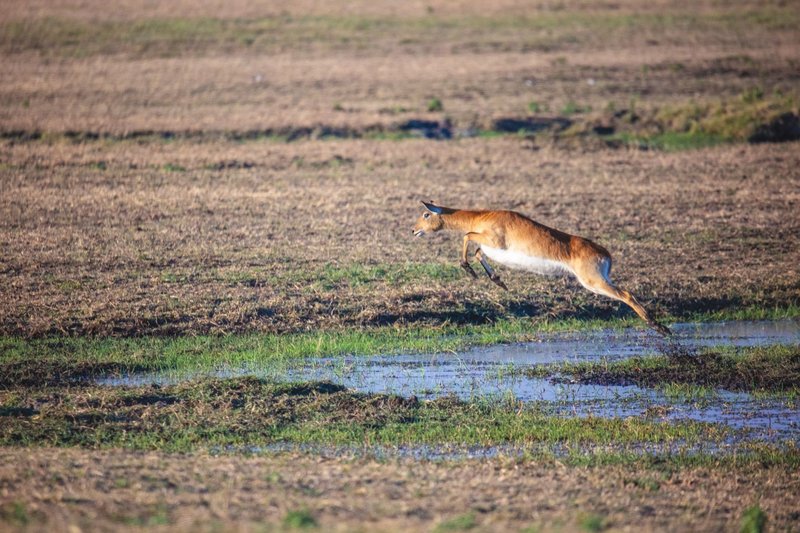
We went to bed early on the first night, just like we would most nights. The pace of the bush forces one to adopt a different schedule—early mornings and nights, with long days in between spent lazing around, just like the animals we came to look at, I suppose. I’m glad I took a book to fill the long hours between the morning and afternoon game drives. This trip’s read was German history, although there was a bookcase in the common area. The local selection was not bad—there were a couple of Dickens’ novels—but I have always treated lodge books with suspicion. Too many unanswered questions. Who put them there? How did a German translation of Out of Africa wind up in the northernmost part of the Kafue National Park?

We went north on our first game drive. The northern parts of Busanga still have many of the waterways intact despite the poor rains across Zambia and the region this year. The Lufupa River feeds the plains, which floods during the rainy season to leave only a few flat areas and many hillocks above water, such as the camp, but most of that is dry now. At times, the waterways turn into deltas, around which many of the wildlife and birdlife congregate. The list of game we saw included—but is not limited to—near-endemic herds of red lechwe and puku, to smaller numbers of elephant, wildebeest, Lichtenstein’s hartebeest, buffalo, roan, zebra, bushbuck, warthog, bush pig, and oribi. This is not to speak of the birdlife, of which around 450 bird species have been spotted. I saw more bird species than I can reliably count up to. The game brings predators, and lions are the most conspicuous and prevalent of the large predators in Busanga.
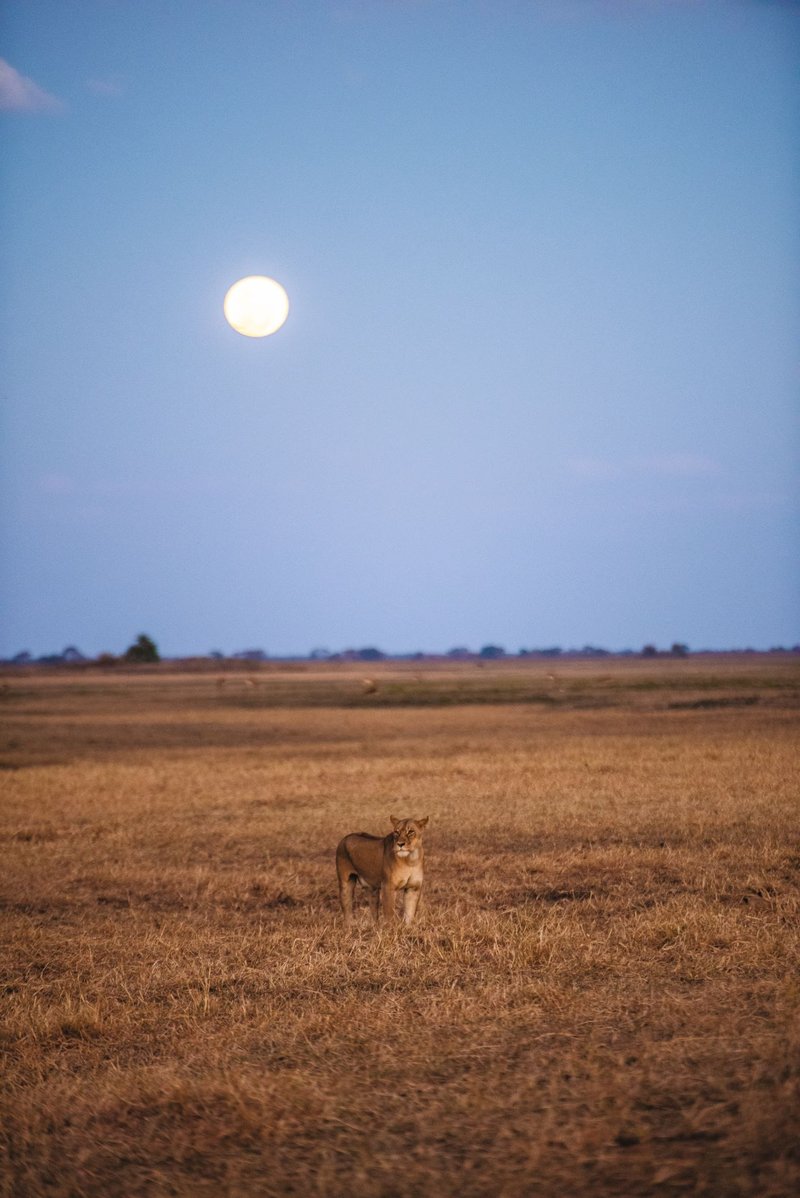
I counted about ten lions the first evening, split into two groups, one being a mother with four cubs. That wasn’t a big group, but lions in Busanga are known to roam in small groups because of the size of the prey. Red lechwe and puku are smaller genera of antelope, and so a lion kill can only feed so many. The largest group we encountered was a group of eleven. One morning, we saw them next to a small stream. The lions emerged from tall grass, and from the outset, the red lechwe in the area were making their distinct distress calls. One call led to another, and soon, there was a symphony of distress as the red lechwe watched the lions anxiously. Luckily for them, the lions were not in the mood to hunt. Some strolled to the tributary and drank water, whilst others decided to lie down. The tension and stillness were palpable, and the already shaky truce was interrupted when one young male decided to chase some lechwe, which he did for about ten minutes before he gave up. Not long after, the same lion found a water monitor in the stream, taking it by the mouth. Two other young lions soon joined as the water monitor tried to break free. It was like watching domestic cats playing with a lizard.

The line between playfulness on the one hand and life and death on the other was unexpected. In my imagination, lions are the most ferocious creatures; they exist only to hunt and kill. And at some level, that is all they do. However, they also showed a range of habits that suggest a playful and caring nature. I became more and more familiar with the habits of animals in general throughout my trip, slowly connecting the dots between habitat and behaviour. I owe much of this to our guide, Ferrison.
Ferrison is fifty-odd, with a gracious smile and off-hand knowledge of birds that is almost impossible to surpass. As a guide for close to thirty years, he not only exhibits a wealth of knowledge of the bush but a wealth of anecdotes, too. During the long breaks, we watched the game through binoculars. As Chosa took his photographs, we discussed animal habits, and Ferrison related anecdotes. Such as that time lions ate a crocodile and threw up; that time a crocodile ate a lion (but didn’t throw up); that time a leopard charged the vehicle, and Ferrison managed to turn it on just in time. The list goes on.
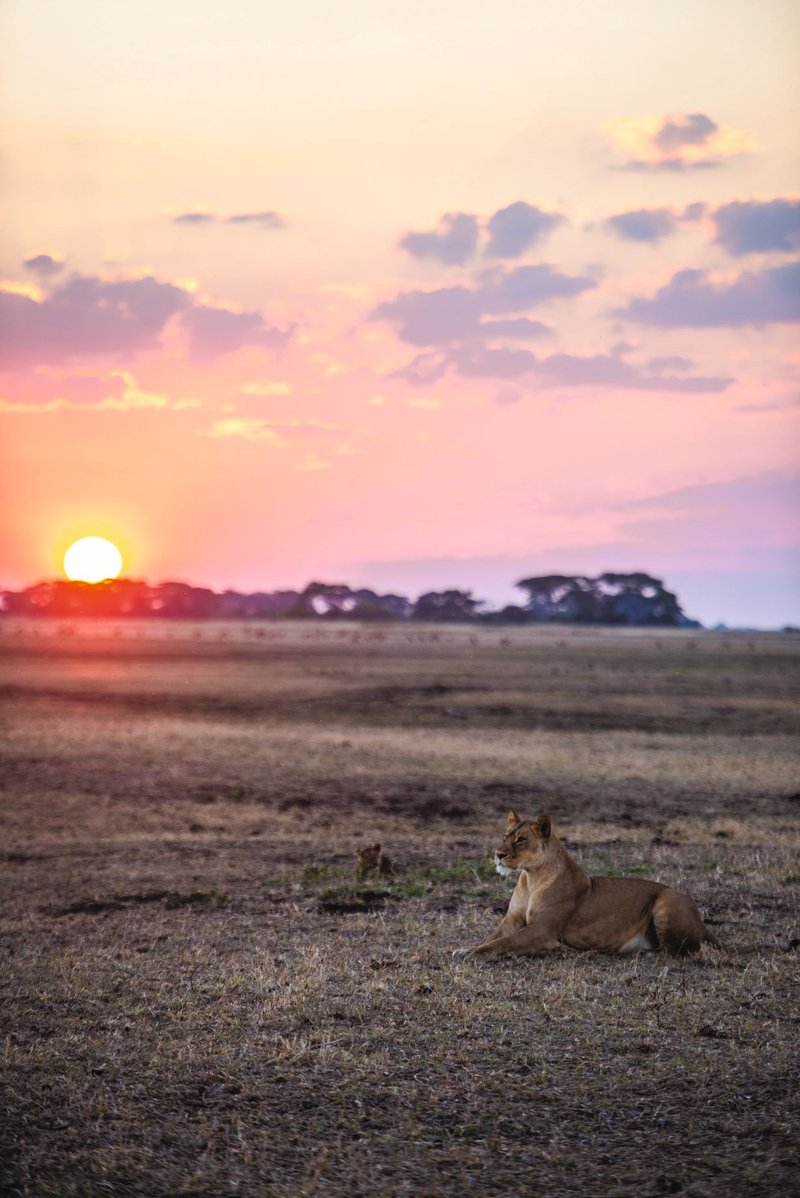
This storehouse of knowledge is geared towards application. Part of the guide’s trade is to track. Even the ideal viewing experience of the Busanga plains is dotted with groups of trees and tall grass for predator and prey alike to hide. Ferrison’s go-to is to watch the behaviour of the game. Prey, naturally, are extremely sensitive to danger. So, the presence of predators in the area is usually met with distress calls or, at the very least, a look in their direction. On one of our game drives, we watched three cheetahs moving through a crowd of frightened red lechwe just by the movements of their heads. Being naturally shy, the cheetahs quickly disappeared into the swaying grass after seeing us. Shortly after that, we heard cries of more puku over a mound.
There is an intimate relationship between the guides and the plains, no better exemplified by their concern for the animals’ well-being. Like anywhere, the threat of poaching looms. We were told a story of two lions that were caught in snares in the thick reeds of a remote area called ‘Papyrus’ to the far north of the plains. They both died. As Ferrison and another guide—Idos—related the story, a ridiculous sadness enveloped them. Idos mimicked the sounds of the lions slowly being strangled to death. His lips smacked against each other as he gargled.

On our drive back to the lodge that evening, we passed through a field of brown grass. In the dying sun, one could make out broken translucent-white spider webs on every blade. Single strands of web were moving in the wind, seemingly flowing with their own will but in tandem. It felt as if electricity was running throughout the plains, and I was discovering it for the first time. The sheer force of nature was showing its hand, hinting to me that I was only one organism amongst many, from the lions to the martial eagles to the puku to the Kaonde fishermen who had constructed fish traps on the Lufupa, like they had been doing for many years. I was struggling to see the difference between these apparently distinct living entities.
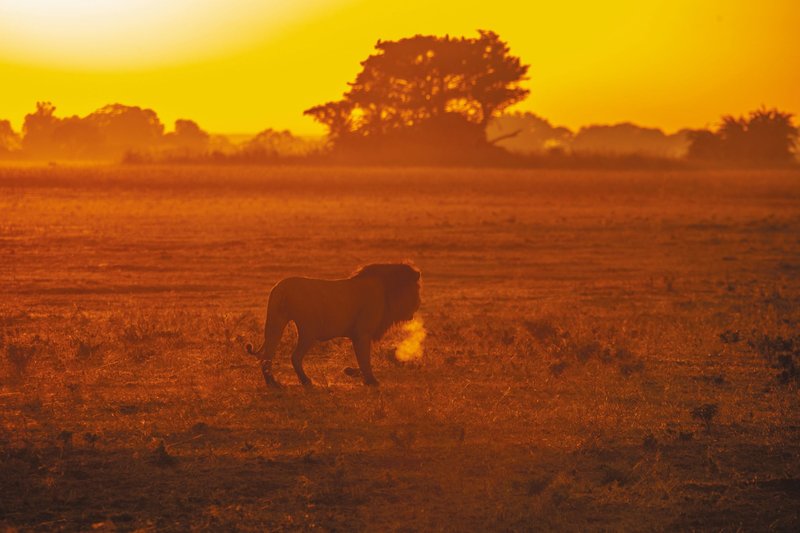
On the last night we stayed at Kasonso, we saw a fire across the plains. When asked about who started it, we were told that it could either be the fishermen or poachers. It raged for the whole night. The fragility of this environment was made apparent. All we had to do was look out towards, across the plains, bathed in moonlight and edged by fire, to be reminded.
Images by Chosa Mweemba and Walid Nassar
